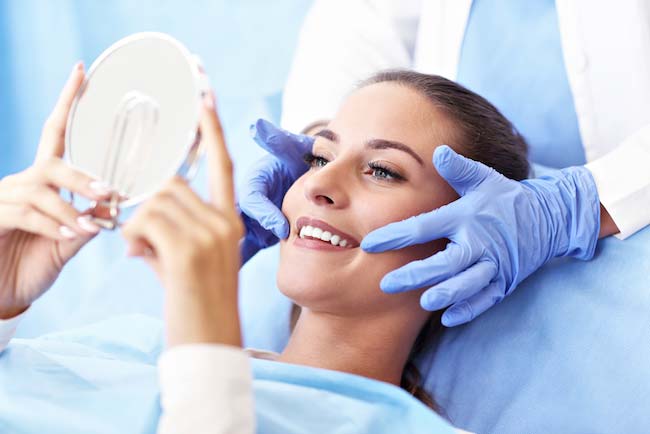Can White Wine Cause Tooth Discoloration?
Posted on 10/1/2024 by Riverwind Dental |
 Sipping a glass of chilled white wine on a hot day is a delightful experience. But, have you ever considered how that refreshing drink might affect your pearly whites? While it may seem surprising, white wine, just like its red counterpart, can contribute to tooth discoloration. Sipping a glass of chilled white wine on a hot day is a delightful experience. But, have you ever considered how that refreshing drink might affect your pearly whites? While it may seem surprising, white wine, just like its red counterpart, can contribute to tooth discoloration.
Understanding Tooth Discoloration
Tooth discoloration, the darkening or staining of teeth, is a common concern for many individuals. It can occur for various reasons, such as:
| • |
Food and Drink: Consuming pigmented foods and beverages like coffee, tea, red wine, and yes, even white wine, can stain the outer layer of your teeth, known as enamel. |
| • |
Tobacco Use: Smoking and chewing tobacco leave dark, stubborn stains on teeth. |
| • |
Medications: Certain medications, such as antibiotics and antihistamines, can cause discoloration. |
| • |
Medical Conditions: Some medical conditions, like excessive fluoride exposure or trauma to the tooth, can also lead to staining. |
| • |
Poor Oral Hygiene: Inadequate brushing and flossing allows plaque buildup, contributing to yellowing and discoloration of teeth. |
How White Wine Stains Teeth
White wine may not seem as staining as red wine, but it still contains chromogens, color pigments that can adhere to the enamel and cause discoloration over time. Additionally, white wine is acidic. This acidity can soften and weaken the enamel, making it more vulnerable to staining from other sources in your diet.
Minimizing the Impact of White Wine on Your Smile
Fortunately, you can take steps to minimize the impact of white wine on your smile:
| • |
Drink in Moderation: Limit your white wine consumption to avoid excessive exposure. |
| • |
Stay Hydrated: Drinking water throughout the day helps to rinse away staining substances and keep your mouth hydrated, which promotes saliva production. Saliva naturally washes away food particles and helps neutralize acids. |
| • |
Brush Regularly: Brush your teeth at least twice a day, especially after consuming white wine. Use a soft-bristled toothbrush and fluoride toothpaste to remove surface stains and plaque buildup. |
| • |
Floss Daily: Don't forget to floss! Flossing reaches areas between teeth where your toothbrush can't, removing food debris and preventing further staining. |
| • |
Regular Dental Cleanings: Schedule regular professional cleanings and checkups with your dentist. This allows for early detection and treatment of staining and other oral health issues. |
| • |
Consider using a straw: Using a straw when drinking white wine can help minimize contact with your teeth, reducing the risk of staining. |
| • |
Eat stain-fighting foods: Crunchy fruits and vegetables like apples, carrots, and celery can help remove surface stains and polish your teeth naturally. |
Prevention is Key
The best way to prevent tooth discoloration from white wine is through proactive oral care. Maintaining a consistent routine of brushing, flossing, and regular dental visits can keep your smile bright and healthy for years to come. Remember, prevention is always better than dealing with the consequences of tooth discoloration later.
By being mindful of your diet, practicing good oral hygiene habits, and visiting your dentist regularly, you can enjoy your favorite beverages without worrying about the impact on your beautiful smile!
|
|